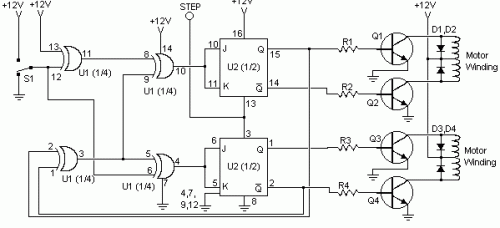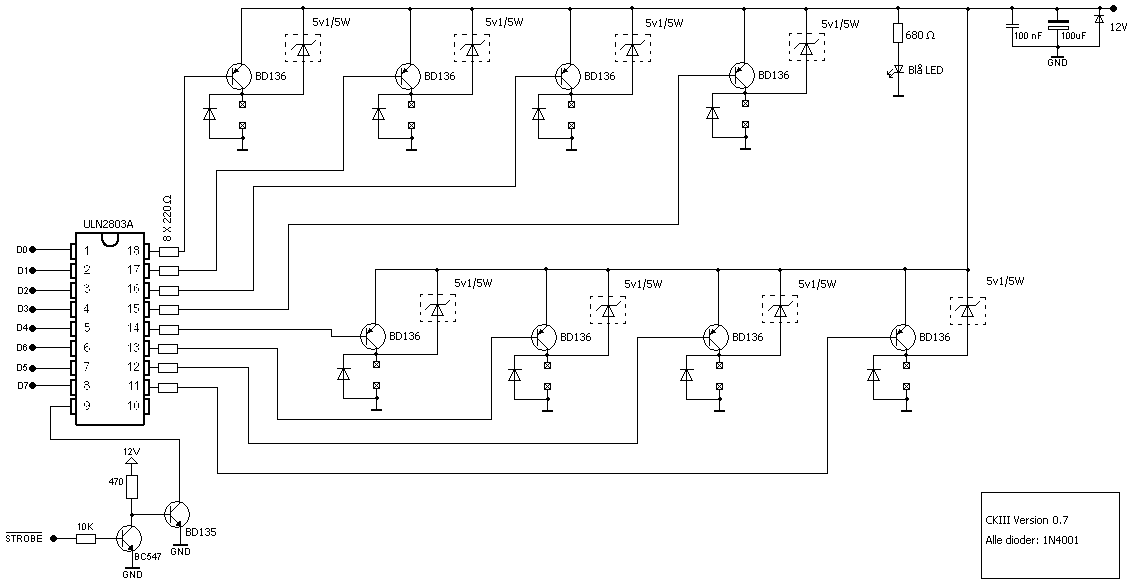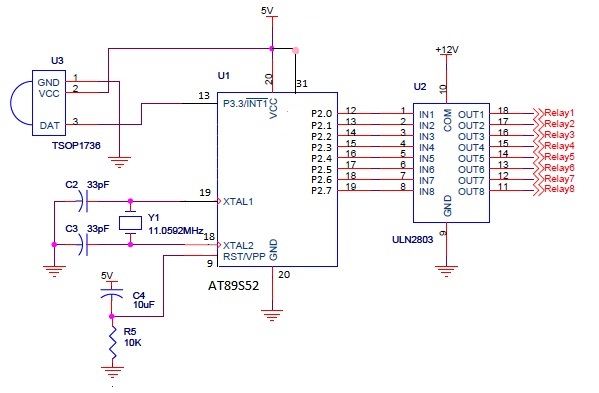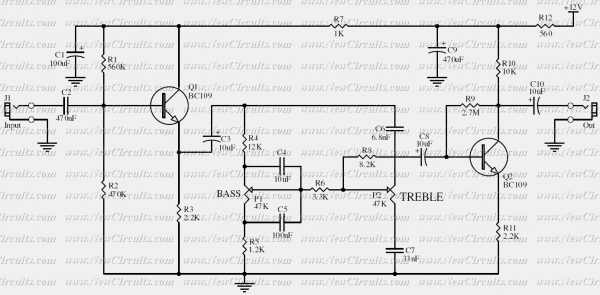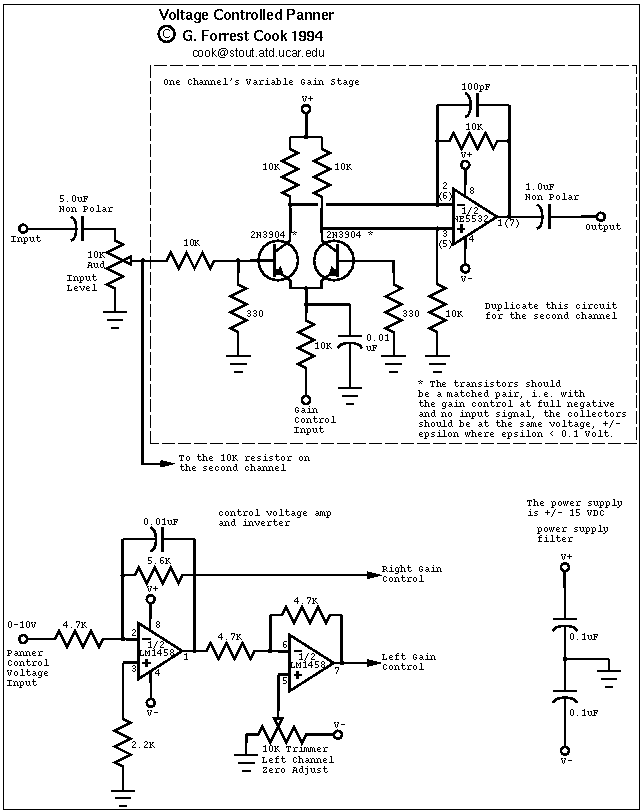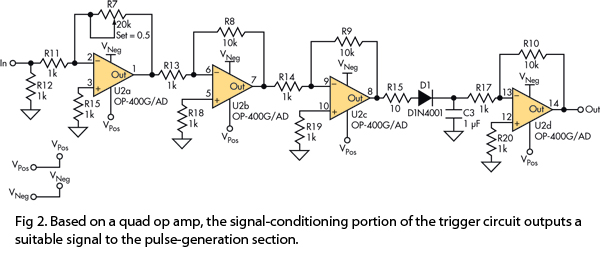
Lights Control for Model Cars
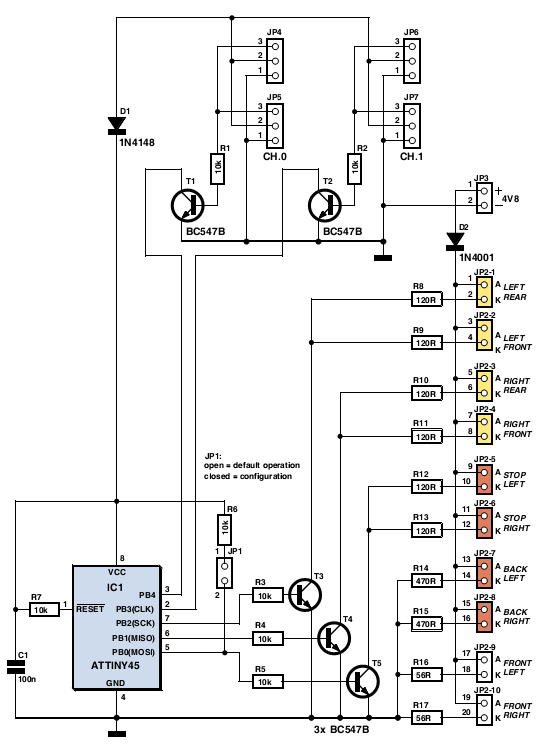
The author gifted a radio-controlled (RC) model car to his partner. She enjoyed it but suggested that adding realistic lights would enhance the experience. Consequently, the author returned to his workshop, utilized his soldering iron, and began outfitting the car with realistic indicators, headlights, tail lights, and brake lights. The fundamental concept involved intercepting the signal from the radio control receiver and employing a microcontroller to simulate indicators with flashing yellow LEDs and brake lights with red LEDs. Additional red LEDs were used for the tail lights, while white LEDs served as headlights. Connectors JP4 and JP5 (channel 0) were wired in parallel, as were JP6 and JP7 (channel 1), allowing the circuit to be integrated into the servo control cables for steering and drive motor. The ATtiny45 microcontroller drew power from the radio receiver through diode D1. Transistors T1 and T2 buffered the servo signals to safeguard the inputs of IC1 from damage. IC1 processed the PWM servo signals and generated appropriate outputs to control the LEDs via driver transistors. T3 managed the two left indicators (yellow), T4 governed the two right indicators, and T5 controlled the brake LEDs (red). The red tail lights (JP2-8 and JP2-8) and white headlights (JP2-9 and JP2-10) remained illuminated continuously. The brake lights operated at a full 20 mA, making them significantly brighter than the tail lights, which received only 5 mA. For those wishing to combine the tail light and brake light functions to save two red LEDs, pin 10 of JP2 can be connected to pin 14 and pin 12 to pin 16. The combined brake/tail LEDs can then be connected at either JP2-5 and JP2-6 or at JP2-7 and JP2-8. JP3 provides an option for a separate lighting supply, which can be linked to an additional four-cell battery pack or the main supply for the drive motor. The resistor values from R8 to R17 are appropriate for a 4.8 V supply. JP2 can be configured as a 2x10 header. The associated software is available for free download from the Elektor website, and pre-programmed microcontrollers can also be obtained. The microcontroller needs to be programmed to recognize the servo signals corresponding to left and right turns, as well as full throttle and full braking. To configure, the completed circuit should be connected to the radio control electronics in the car while ensuring that everything is powered off. Jumper JP1 should be fitted to enable configuration mode, followed by powering on the radio control transmitter, setting all proportional controls to their center positions, and then powering on the receiver. The indicator LEDs should initially flash on both sides. The car will indicate left for 3 seconds; during this time, the steering should be turned fully to the left and the throttle set to full reverse (maximum braking). These controls should be held until the car indicates right. The controls should then be set to their opposite extremes and held until both sides flash again. If the car has an internal combustion engine (and cannot reverse), the throttle control should remain at full; if it has an electric motor, the throttle should be set to full reverse. This position should be maintained while both sides are flashing. The configuration is complete, and JP1 can be removed. If an error occurs during configuration, the process must be restarted from the beginning.
The described circuit integrates several components to achieve the desired lighting effects for the RC model car. The ATtiny45 microcontroller serves as the central processing unit, interpreting the signals from the radio control receiver and controlling the output to the LEDs based on the received PWM signals. The use of driver transistors (T3, T4, and T5) allows for the control of the LED brightness, ensuring that the brake lights are more prominent than the tail lights, which is crucial for safety and realism in operation.
The circuit's design includes protective measures, such as the buffering transistors (T1 and T2), which prevent over-voltage situations that could damage the microcontroller. The incorporation of a diode (D1) ensures that the microcontroller receives a stable power supply from the radio receiver, further enhancing circuit reliability.
The configuration process highlights the adaptability of the system, allowing users to customize the behavior of the indicators and lights based on their preferences or the specific characteristics of their RC model. The option to connect an external power supply for the lighting system adds flexibility, accommodating various power sources to ensure consistent performance.
Overall, this circuit not only enhances the aesthetic appeal of the RC model car but also improves its functionality, making it a more engaging and enjoyable experience for the user.The author gave his partner a radio controlled (RC) model car as a gif t. She found it a lot of fun, but thought that adding realistic lights would be a definite improvement. So the author went back to his shed, plugged in his soldering iron, and set to work equipping the car with realistic indicators, headlights, tail lights and brake lights. The basic idea was to tap into the signal from the radio control receiver and, with a bit of help from a microcontroller, simulate indicators using flashing yellow LEDs and brake lights using red LEDs. Further red LEDs are used for the tail lights, and white LEDs for the headlights. Connectors JP4 and JP5 (channel 0) are wired in parallel, as are JP6 and JP7 (channel 1), allowing the circuit to be inserted into the servo control cables for the steering and drive motor respectively.
The ATtiny45 micro-controller takes power from the radio receiver via diode D1. T1 and T2 buffer the servo signals to protect IC1`s inputs from damage. IC1 analyses the PWM servo signals and gen-erates suitable outputs to switch the LEDs via the driver transistors. T3 drives the two left indicators (yellow), T4 the two right indica-tors, and T5 the brake LEDs (red).
The red tail lights (JP2-8 and JP2-8) and the white head-lights (JP2-9 and JP2-10) are lit continuously. The brake lights are driven with a full 20 mA, so that they are noticeably brighter than the tail lights, which only receive 5 mA.
If you wish to combine the functions of tail light and brake light, saving t wo red LEDs, sim-ply connect pin 10 of JP2 to pin 14 and pin 12 to pin 16. Then connect the two combined brake/tail LEDs either at JP2-5 and JP2-6 or at JP2-7 and JP2-8. JP3 is provided to allow the use of a separate lighting supply. This can either be connected to an additional four-cell battery pack or to the main supply for the drive motor.
The val-ues given for resistors R8 to R17 are suitable for use with a 4. 8 V supply. JP2 can take the form of a 2x10 header. As usual the sof t ware is available as a free download from the Elektor web pages accom-panying this article[1], and ready-programmed microcontrollers are also available. The microcontroller must be taught what servo signals correspond to left and right turns, and to full throttle and full braking.
First connect the fin-ished circuit to the radio control electronics in the car, making sure everything is switched of f. Fit jumper JP1 to enable configuration mode, switch on the radio control transmit-ter, set all proportional controls to their cen-tre positions, and then switch on the receiver.
The indicator LEDs should first flash on both sides. Then the car will indicate left for 3 s: during this time quickly turn the steering on the radio control transmitter fully to the left and the throt tle to full reverse (maximum braking). Hold the controls in this position until the car starts to indicate right. Then set the controls to their opposite extremes and hold them there until both sides flash again. Now, if the car has an internal combustion engine (and so cannot go in reverse), keep the throttle control on full; if the car has an electric motor, set the throttle to full reverse.
Hold this position while both sides are flashing. Configuration is now complete and JP1 can be removed. If you make a mistake during the configuration process, start again from the beginning. 🔗 External reference
The described circuit integrates several components to achieve the desired lighting effects for the RC model car. The ATtiny45 microcontroller serves as the central processing unit, interpreting the signals from the radio control receiver and controlling the output to the LEDs based on the received PWM signals. The use of driver transistors (T3, T4, and T5) allows for the control of the LED brightness, ensuring that the brake lights are more prominent than the tail lights, which is crucial for safety and realism in operation.
The circuit's design includes protective measures, such as the buffering transistors (T1 and T2), which prevent over-voltage situations that could damage the microcontroller. The incorporation of a diode (D1) ensures that the microcontroller receives a stable power supply from the radio receiver, further enhancing circuit reliability.
The configuration process highlights the adaptability of the system, allowing users to customize the behavior of the indicators and lights based on their preferences or the specific characteristics of their RC model. The option to connect an external power supply for the lighting system adds flexibility, accommodating various power sources to ensure consistent performance.
Overall, this circuit not only enhances the aesthetic appeal of the RC model car but also improves its functionality, making it a more engaging and enjoyable experience for the user.The author gave his partner a radio controlled (RC) model car as a gif t. She found it a lot of fun, but thought that adding realistic lights would be a definite improvement. So the author went back to his shed, plugged in his soldering iron, and set to work equipping the car with realistic indicators, headlights, tail lights and brake lights. The basic idea was to tap into the signal from the radio control receiver and, with a bit of help from a microcontroller, simulate indicators using flashing yellow LEDs and brake lights using red LEDs. Further red LEDs are used for the tail lights, and white LEDs for the headlights. Connectors JP4 and JP5 (channel 0) are wired in parallel, as are JP6 and JP7 (channel 1), allowing the circuit to be inserted into the servo control cables for the steering and drive motor respectively.
The ATtiny45 micro-controller takes power from the radio receiver via diode D1. T1 and T2 buffer the servo signals to protect IC1`s inputs from damage. IC1 analyses the PWM servo signals and gen-erates suitable outputs to switch the LEDs via the driver transistors. T3 drives the two left indicators (yellow), T4 the two right indica-tors, and T5 the brake LEDs (red).
The red tail lights (JP2-8 and JP2-8) and the white head-lights (JP2-9 and JP2-10) are lit continuously. The brake lights are driven with a full 20 mA, so that they are noticeably brighter than the tail lights, which only receive 5 mA.
If you wish to combine the functions of tail light and brake light, saving t wo red LEDs, sim-ply connect pin 10 of JP2 to pin 14 and pin 12 to pin 16. Then connect the two combined brake/tail LEDs either at JP2-5 and JP2-6 or at JP2-7 and JP2-8. JP3 is provided to allow the use of a separate lighting supply. This can either be connected to an additional four-cell battery pack or to the main supply for the drive motor.
The val-ues given for resistors R8 to R17 are suitable for use with a 4. 8 V supply. JP2 can take the form of a 2x10 header. As usual the sof t ware is available as a free download from the Elektor web pages accom-panying this article[1], and ready-programmed microcontrollers are also available. The microcontroller must be taught what servo signals correspond to left and right turns, and to full throttle and full braking.
First connect the fin-ished circuit to the radio control electronics in the car, making sure everything is switched of f. Fit jumper JP1 to enable configuration mode, switch on the radio control transmit-ter, set all proportional controls to their cen-tre positions, and then switch on the receiver.
The indicator LEDs should first flash on both sides. Then the car will indicate left for 3 s: during this time quickly turn the steering on the radio control transmitter fully to the left and the throt tle to full reverse (maximum braking). Hold the controls in this position until the car starts to indicate right. Then set the controls to their opposite extremes and hold them there until both sides flash again. Now, if the car has an internal combustion engine (and so cannot go in reverse), keep the throttle control on full; if the car has an electric motor, set the throttle to full reverse.
Hold this position while both sides are flashing. Configuration is now complete and JP1 can be removed. If you make a mistake during the configuration process, start again from the beginning. 🔗 External reference
Warning: include(partials/cookie-banner.php): Failed to open stream: Permission denied in /var/www/html/nextgr/view-circuit.php on line 713
Warning: include(): Failed opening 'partials/cookie-banner.php' for inclusion (include_path='.:/usr/share/php') in /var/www/html/nextgr/view-circuit.php on line 713
